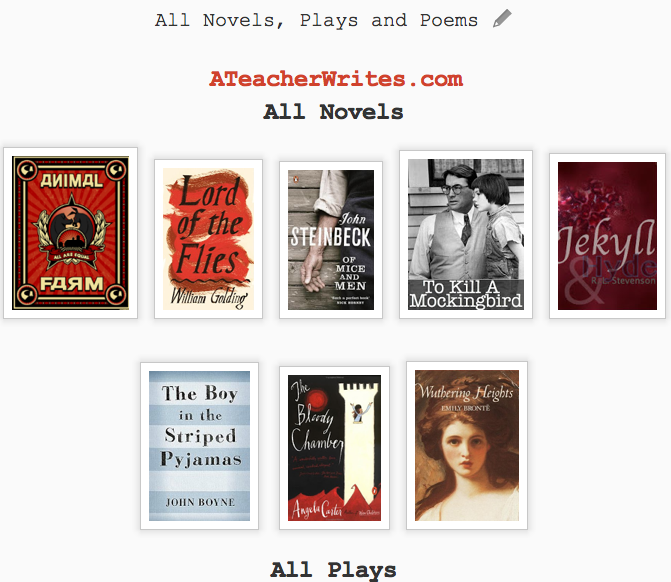 Of Mice and Men is a great American novel that deals with the American Dream and the trauma of the Great Depression. The location is Salinas, California, an agricultural area full of migrant workers. Steinbeck depicts the place, and the lifestyle in a pared back, realistic way, down to the colloquial language – ‘ain’t’ ‘why’n’t’, ‘fella’ and ‘’im’, and frequent, violent slang like ‘bastard’, ‘tart’ and ‘looloo’- used by the working men. This shows the rough side to this harsh, often ‘mean’ life caused by the conditions in which the men live.
Of Mice and Men is a great American novel that deals with the American Dream and the trauma of the Great Depression. The location is Salinas, California, an agricultural area full of migrant workers. Steinbeck depicts the place, and the lifestyle in a pared back, realistic way, down to the colloquial language – ‘ain’t’ ‘why’n’t’, ‘fella’ and ‘’im’, and frequent, violent slang like ‘bastard’, ‘tart’ and ‘looloo’- used by the working men. This shows the rough side to this harsh, often ‘mean’ life caused by the conditions in which the men live.At first, though we’re introduced to the main characters in an empty, Eden-like place of natural beauty of ‘warm’ ‘golden’ beauty, with sensory language like ‘pool’ ‘slopes’ and ‘Gabilan’ that run sensually over liquids (l) and plosives (p,b). Steinbeck’s love of his home landscape is tangible. His use of the present tense ‘the Salinas river drops… and runs deep and green’ give it a timeless, eternal feel, which adds to the Edenic quality. He lists animals, populating it almost as God does the earth in Genesis, with ‘lizards’ ‘heron’ ‘rabbits’ ‘dogs’ ‘deer’ and finally a ‘snake’. This snake is ‘little’ though, which diminishes its sinister feel slightly. However, Steinbeck will return to it later, in a darker mood.
The landscape of chapter one is open, free to all, and sets a tranquil mood which is broken by the interruption of George’s violent swearing, first about the bus driver, then when he calls his large companion a ‘crazy bastard’. It seems to calm him though towards the end and he loves looking at it, suggesting a deep affinity with this very American, natural beauty. This links to the power of the American dream to ‘live off the fatta the lan’’, close to nature, with ‘rabbits’ and ‘alfalfa’. Here, the rabbits are like ‘little stone sculptures’, deepening the sense that this natural beauty is crafted by a higher power. Later in the novel, the ‘brush’ near this location will become a place of brief sanctuary in ‘trouble’ – an ominous word that is used repeatedly, especially at the start. Like the fall of man, George senses that Lennie’s downfall is inevitable and Steinbeck prepares us for it through the use of the landscape.
Steinbeck drew on his own experience to create the novel and many of the locations have a detailed, realistic feel. The mid-section is largely in the ‘bunkhouse’ showing how central the men’s communal – but isolated lifestyle is. He lists, in almost parsimonious detail the contents of the ‘two shelves’ allotted to the men for their ‘bindle’. From the type of magazines to lice repellant, ‘talcum powder’ and ‘razors’, we see attempts at civilization in dirty, tough conditions – for dignity.
In the novel, Steinbeck uses light symbolically. In the open of Chapter One it splashes freely through the landscape. In Chapter two, it is portioned by the windows into ‘bright dust-laden bar’ and later into a ‘rectangle of light’ that is ‘cut off’ by Curley’s wife. There is no freedom, or privacy in this place. Each character trespasses on the other in this fiercely lonely communal life. The men want Curley’s Wife to leave, just like Crooks protects his own privacy. In all this though, the men – just like Curley’s wife – are trapped – by the need for money. Spooked, Lennie repeats “Let’s go” “Le’s get outta here” it’s “mean”, but George says “We gotta stay”, despite the obvious danger to them both.
When ‘Auburn’ and ‘Weed’ are mentioned it gives some sense of scale to George and Lennie’s itinerant lifestyle, and also sets up the notion that they go back a long way together. CONTINUE THIS PARAGRAPH using this to help you
Continue: WRITE ABOUT CROOKS’ SPACE
Continue: HOW IS PATHETIC FALLACY USED TO EMPHASISE THE TRAGEDY IN THE FINAL CHAPTER?
The author, Melanie Kendry, is an Oxford graduate, outstanding-rated English Language and Literature teacher and of ages 10-18 in the British education system. In 2012, she was nominated for Pearson’s Teaching Awards. As a private tutor, she raises grades often from C to A. Her writing is also featured in The Huffington Post. She offers private tuition in the Haywards Heath area, West Sussex.






